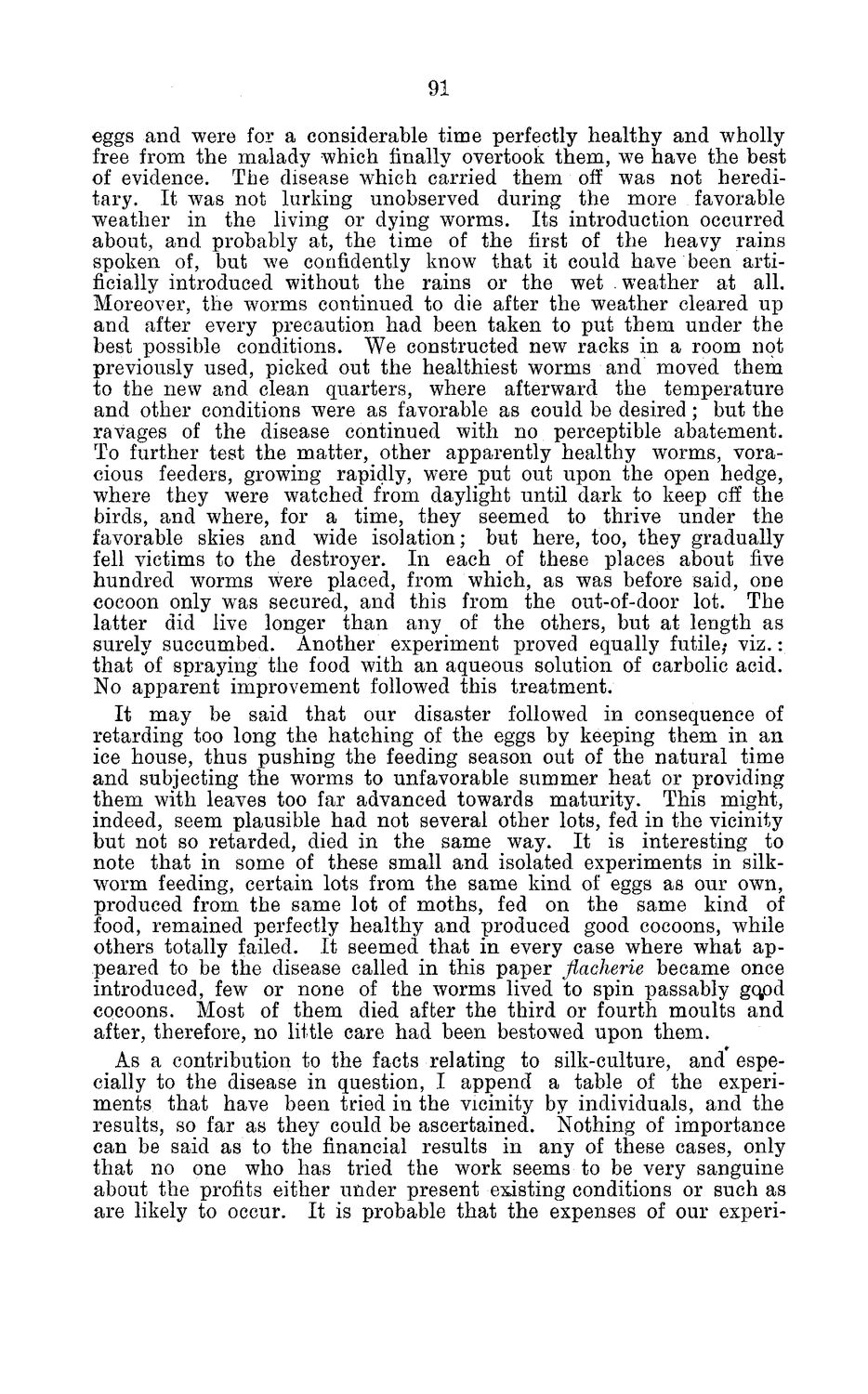| |
| |
Caption: Board of Trustees Minutes - 1884
This is a reduced-resolution page image for fast online browsing.

EXTRACTED TEXT FROM PAGE:
91 eggs and were for a considerable time perfectly healthy and wholly free from the malady which finally overtook them, w7e have the best of evidence. The disease which carried them off was not hereditary. It was not lurking unobserved during the more favorable weather in the living or dying worms. Its introduction occurred about, and probably at, the time of the first of the heavy rains spoken of, but we confidently know that it could have been artificially introduced without the rains or the wet weather at all. Moreover, the worms continued to die after the weather cleared up and after every precaution had been taken to put them under the best possible conditions. We constructed new racks in a room not previously used, picked out the healthiest worms and moved them to the new and clean quarters, where afterward the temperature and other conditions were as favorable as could be desired; but the ravages of the disease continued with no perceptible abatement. To further test the matter, other apparently healthy worms, voracious feeders, growing rapidly, were put out upon the open hedge, where they were watched from daylight until dark to keep off the birds, and where, for a time, they seemed to thrive under the favorable skies and wide isolation; but here, too, they gradually fell victims to the destroyer. In each of these places about five hundred worms were placed, from which, as was before said, one cocoon only was secured, and this from the out-of-door lot. The latter did live longer than any of the others, but at length as surely succumbed. Another experiment proved equally futile; viz.: that of spraying the food with an aqueous solution of carbolic acid. No apparent improvement followed this treatment. It may be said that our disaster followed in consequence of retarding too long the hatching of the eggs by keeping them in an ice house, thus pushing the feeding season out of the natural time and subjecting the worms to unfavorable summer heat or providing them with leaves too far advanced towards maturity. This might, indeed, seem plausible had not several other lots, fed in the vicinity but not so retarded, died in the same way. It is interesting to note that in some of these small and isolated experiments in silkworm feeding, certain lots from the same kind of eggs as our own, produced from the same lot of moths, fed on the same kind of food, remained perfectly healthy and produced good cocoons, while others totally failed. It seemed that in every case where what appeared to be the disease called in this paper flacherie became once introduced, few or none of the worms lived to spin passably gqod cocoons. Most of them died after the third or fourth moults and after, therefore, no little care had been bestowed upon them. As a contribution to the facts relating to silk-culture, and especially to the disease in question, I append a table of the experiments that have been tried in the vicinity by individuals, and the results, so far as they could be ascertained. Nothing of importance can be said as to the financial results in any of these cases, only that no one who has tried the work seems to be very sanguine about the profits either under present existing conditions or such as are likely to occur. It is probable that the expenses of our experi-
| |